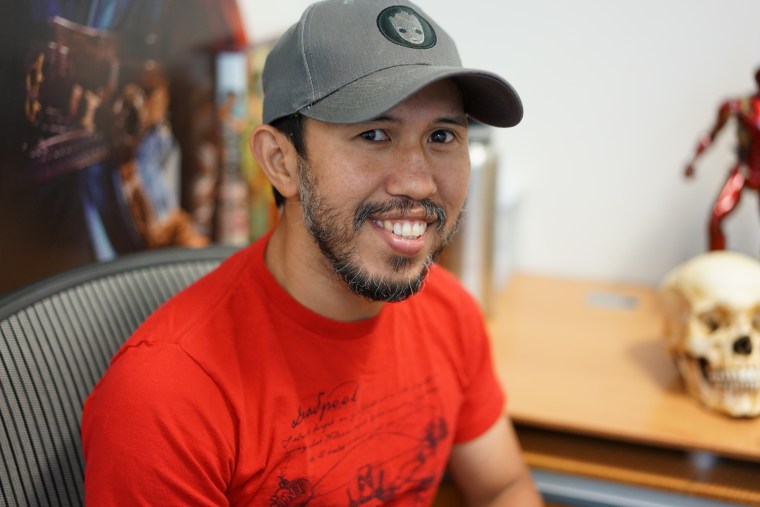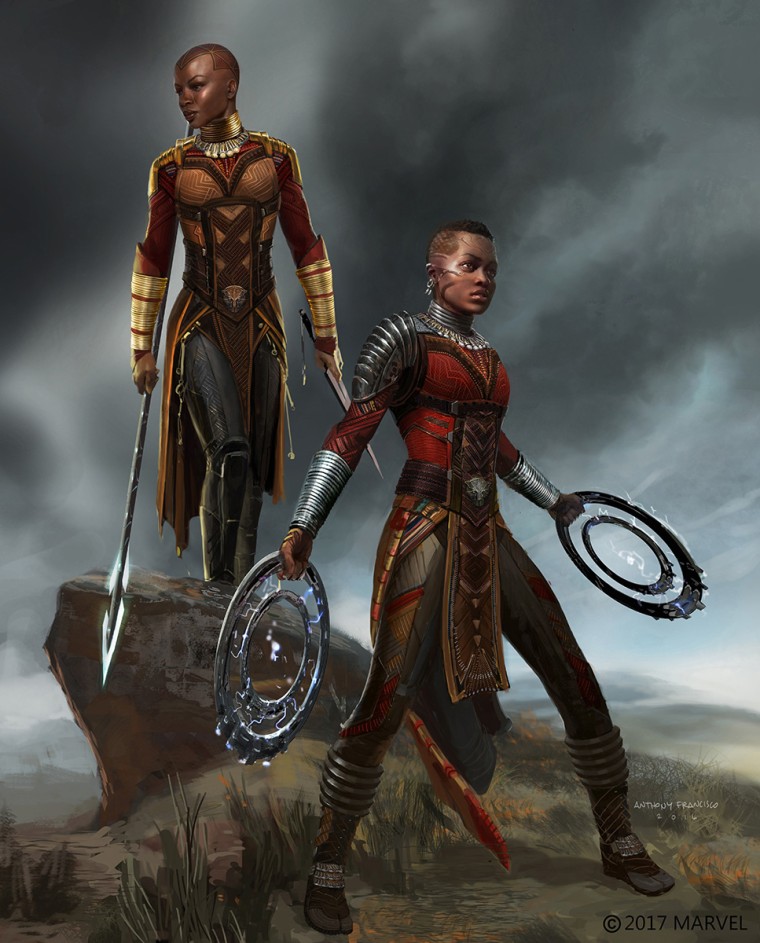When Anthony Francisco received the assignment to design costumes for “Black Panther,” he knew the project was going to be big.
A senior visual designer at Marvel Studios, Francisco and his team (headed by Marvel Studios visual development head Ryan Meinerding), have worked on more than a dozen super hero movies, but none as iconic as “Black Panther.”
They thought I grew up in a hut! But yes, we do have technology.
Anthony Francisco
“We knew it was going to be big and important before it came out,” Francisco said. “We put out heart and soul into every movie, but this was special.”
Before the script had even arrived, Francisco’s team began visually designing the costumes and environments, making sure they were as loyal as possible to the Marvel Comics vision. They were also guided by director Ryan Coogler’s ”Wakanda bible,” which outlined the vision of a futuristic African society that Coogler had.
Francisco’s task was to visually design the costumes worn by the “Dora Milaje” — the all-female personal guard of the ruler of the fictional African country of Wakanda — which were then created by costume designer Ruth Carter.
He wanted to make sure the costumes were iconic and communicated strength and modernity.
“I hate it when women are put down,” Francisco said. “That was the main drive for me when I designed this. Aside from the cultural representation, the #MeToo movement was happening while I was working on this. It was important for me to do a really good job.”
The Dora Milaje costumes draw heavily from Pan-African roots, which Francisco made sure to honor. The gold rings the warriors wear around their necks are known as “idzila” and come from the Ndebele tribe of South Africa, Francisco said. The deep red color of their armor draws from Maasai warriors from southern Kenya and northern Tanzania.
Francisco noted that Japanese and Native American elements also informed his process, as well as symbols from the Catholic Church and his Filipino upbringing.

During his creative process, Francisco thought about the textures he experienced growing up in the Philippines, like the weave chairs that his family owned, he said. He also drew on a table runner in his aunt’s home that he used as a costume as a child as well as clothing from the Igorot ethnic group in the Philippines.
“As a kid, I would take those table runners and put them over my shoulder or my waist as a belt,” Francisco said. “Those references helped me problem solve during my design process.”
The artist also feels a personal connection to the film's message of cultural pride and representation, as he said that mainstream media depictions of Africa have historically been limited by what he calls a “third-world” narrative.
He could relate: When he first moved to Los Angeles from the Philippines as a teenager, his new friends didn’t think he grew up with electricity, much less a television set.
“They thought I grew up in a hut! But yes, we do have technology,” he said. “That’s why this movie was close to me. It was important to me as a fellow minority to be a part of changing the narrative.”
Francisco also identifies slightly with the film’s antagonist and witnessed firsthand the type of violence and tension the character experienced while a teenager, he said.
With the success of “Black Panther,” Francisco unexpectedly finds himself in the public eye.

“I never thought I could be a voice for the Asian-American community. Even my old classmates in the Philippines saw my name in the news, and I didn’t know that it made it that far,” he said.
Eventually, Francisco may work on an Asian-American super hero, he noted, referencing Marvel Comics’ current “The Hulk,” who is a Korean-American character named Amadeus Cho.
“Comic books are more forward thinking than Hollywood!" he said. "And it’s still taking so long for Hollywood to catch up to it. But things are definitely changing.”
Follow NBC Asian America on Facebook, Twitter, Instagram and Tumblr.
